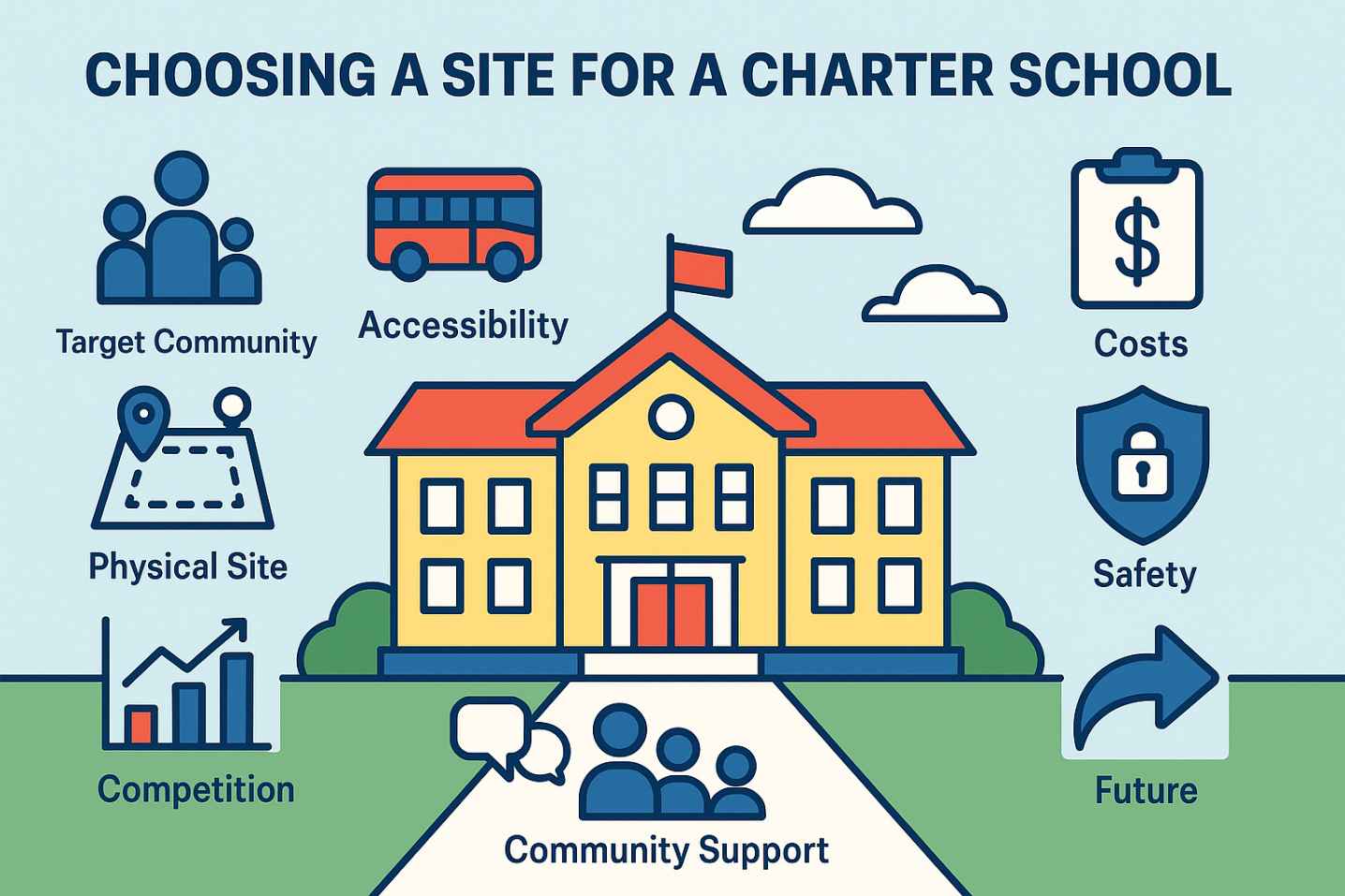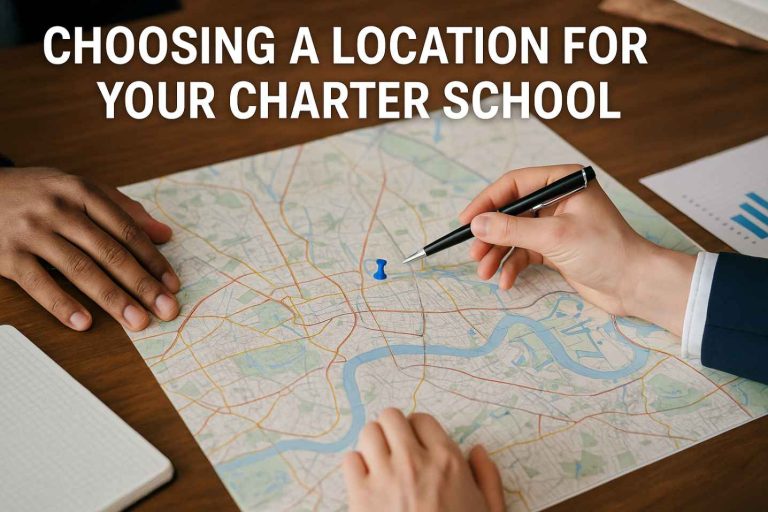Opening a charter school is an exciting venture, but before the first student walks through the doors, there’s a critical decision to make — where those doors will be. The location of your charter school can directly impact enrollment, accessibility, operational costs, and the community perception of your institution. Whether you’re starting from scratch or expanding to a new campus, choosing the right site is a blend of strategic planning, community insight, and logistical know-how.

1. Understand Your Target Community
A great school location begins with knowing who you want to serve. Start by defining your target student population. Are you aiming to serve a specific neighborhood, demographic, or age group? This step is about more than just mapping the local area — it’s about understanding the people in it.
Conduct demographic research, review census data, and talk to community members. Look into factors like population growth trends, household income levels, and the age distribution of residents. A location with a stable or growing school-age population increases the likelihood of consistent enrollment over time.
2. Prioritize Accessibility and Transportation
Even the most innovative charter school will struggle to attract students if it’s difficult to reach. Accessibility should be at the top of your checklist. Consider:
- Proximity to public transportation for families without cars.
- Safe walking and biking routes, including sidewalks and crosswalks.
- Convenient drop-off and pick-up zones to keep traffic flowing.
If your school plans to offer bus services, assess road conditions and travel times to ensure routes are efficient and safe. The easier it is for students to get to school, the stronger your enrollment potential.
3. Evaluate the Physical Site
The perfect location needs more than just a good address — it must also meet your school’s physical and functional needs. Key factors include:
- Size and scalability: Is there enough space for classrooms, common areas, outdoor activities, and potential future expansion?
- Building condition: Older buildings may have charm but could require costly repairs or updates to meet safety and code requirements.
- Zoning and compliance: Confirm that the site is zoned for educational use and complies with local building codes.
Remember to think long-term. If you expect to grow enrollment over the next five to ten years, choose a site that can accommodate that growth without forcing another move.
4. Factor in Costs Beyond Rent or Purchase Price
Budgeting for a school site goes far beyond the monthly rent or mortgage. Additional costs may include:
- Renovations and retrofitting to create a safe and functional learning environment.
- Technology and infrastructure upgrades, such as wiring for internet and installing security systems.
- Ongoing maintenance like landscaping, cleaning, and building repairs.
Selecting a location that’s affordable now but costly to maintain can drain resources that should go toward student programs. A comprehensive cost analysis early in the process can prevent financial strain later.
5. Consider the Competition
Before settling on a location, research the existing educational landscape. Are there other charter schools, private schools, or high-performing public schools nearby? Competition isn’t necessarily bad, but it’s important to position your school strategically.
Look for areas where families have limited access to high-quality education, and be ready to highlight your school’s unique programs, teaching style, or extracurricular opportunities that set you apart.
6. Assess Community Support
A supportive community can be one of your biggest assets. Engage with local leaders, parents, and neighborhood organizations early in the site selection process. Their insights can help you identify potential challenges — such as traffic concerns or safety issues — before they become roadblocks.
Community buy-in not only improves your school’s reputation but can also lead to partnerships, volunteer involvement, and financial contributions.
7. Plan for Safety and Security
Safety is non-negotiable when choosing a school site. Evaluate crime statistics in the area, the visibility of the property, and the quality of street lighting. The building itself should have secure entrances, emergency exits, and the capacity for modern security systems.
A safe location gives parents peace of mind and helps create an environment where students can focus on learning.
8. Think About the Future
Your school’s first location doesn’t have to be its forever home, but ideally, it should serve you well for many years. Consider how the area might change over time. Are there planned housing developments, new transportation routes, or community projects that could affect your school’s accessibility or appeal?
A forward-thinking approach can help ensure your location remains an asset rather than a limitation.
Final Thoughts
Choosing the right site for your charter school is more than just a real estate decision — it’s a strategic step that must align with both your educational mission and your charter school design plan. The location you select should support your vision for student learning, foster family and community engagement, and provide the flexibility for your school to grow and evolve.
By carefully considering accessibility, community needs, budget realities, and the site’s long-term potential, you create the foundation for a learning environment that is not only functional but inspiring. When your location complements your design plan — from classroom layouts to outdoor spaces — it strengthens your ability to deliver quality education and a positive school culture. In the world of education, location is more than a backdrop; it’s an active contributor to your success, helping your charter school leave a lasting and meaningful impact.

